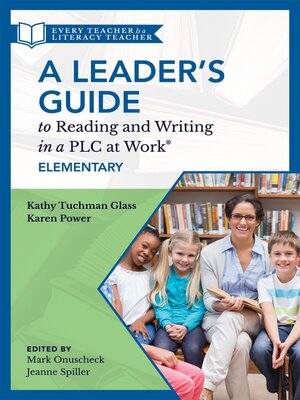Leader's Guide to Reading and Writing in a PLC at Work®, Elementary
ebook ∣ (The Ultimate Guide to Leading Literacy Instruction Efforts in an Elementary Setting)
By Kathy Tuchman Glass

Sign up to save your library
With an OverDrive account, you can save your favorite libraries for at-a-glance information about availability. Find out more about OverDrive accounts.
Find this title in Libby, the library reading app by OverDrive.



Search for a digital library with this title
Title found at these libraries:
| Library Name | Distance |
|---|---|
| Loading... |
Confidently lead preK-5 literacy improvement in your professional learning community (PLC). Aligned to the Every Teacher Is a Literacy Teacher series, this results-focused guide outlines how to take urgent action to address deficiencies and increase literacy rates. Learn how to bring a new level of focus to your teacher teams and help them do the important daily work of ensuring every student successfully reads and writes at or beyond grade level.
Contents:
Introduction: Leaders of Literacy
Chapter 1: Establish Clarity About Student Learning Expectations
Chapter 2: Examine Assessment Options for Literacy
Chapter 3: Create a Learning Progression to Guide Instruction and Assessment
Chapter 4: Develop Collective Understanding of Learning Expectations
Chapter 5: Respond to Student Data to Ensure All Students Learn
Chapter 6: Design Lessons Using the Gradual Release of Responsibility Instructional Framework
Chapter 7: Plan for High-Quality Instruction in Literacy
Chapter 8: Select Appropriate Instructional Strategies
Chapter 9: Consider Equity in Literacy
Epilogue
Appendix A: Reference Points, Templates, and Tools
Appendix B: List of Figures and Tables
References and Resources
Index







